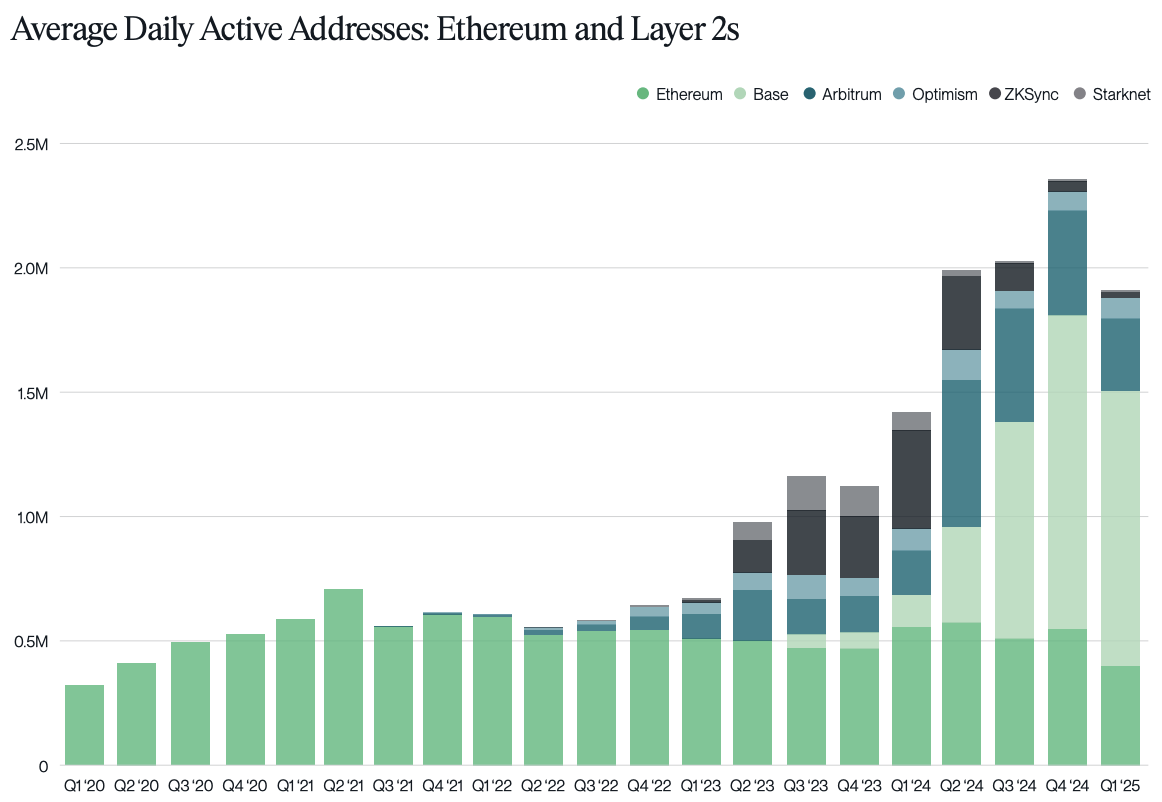How to objectively evaluate Ethereums Layer2 strategy?
Original author: Haotian
Recently, the voices of FUD Ethereum and @VitalikButerin have become stronger. In particular, overseas KOLs have had very interesting discussions on topics such as Blobs space utilization and Layer 2 revenue. Putting aside the emotions of the secondary market, how should we evaluate Ethereums layer 2 strategy simply by looking at the data? Next, I would like to express my opinion:
Let’s go back to before the Ethereum Cancun upgrade. Everyone was enthusiastic about RaaS and DA War, because the layer 2 off-chain one-click issuance has sprung up like mushrooms after a rain, which will directly drive the demand for Ethereum mainnet DA capabilities in layer 2 Batch transactions, and then set off a price war for Blobs space. Then a large amount of ETH was destroyed in the layer 2 War, and Ethereum turned from inflation to deflation, driving up the price of Ethereum, and everyone was happy.
However, the fact is that the grand strategic narrative of Rollup as a Service died after the Cancun upgrade. The basic infra capabilities for one-click chain launch were in place, but not enough developers were expected to compete in chain launches.
1) The space utilization of Blobs is not saturated enough. According to statistics, the utilization rate is only 80%. Layer 2 can optimize the utilization rate of blobs and actively choose whether to occupy blobs in the current block. For example, it monitors the utilization of blobs in the current block. If the utilization rate is too high, it will jump directly to the next block. This directly prevents the FOMO of the blob rate market.
2) The usage fee rate of Blobs and the DA cost of Layer 2 projects currently only account for 0.3% of their total revenue. According to incomplete statistics, the daily revenue of Layer 2 projects is about 500,000 US dollars, and the cost of Blobs space usage fee only accounts for 0.3%, which is far from the level of saturation. Although Layer 2 projects have other software and hardware costs such as Sequencer servers and Prover verification collaboration, the visible DA cost is not high.
On the one hand, this shows that Ethereum has been very successful in reducing fees after the Cancun upgrade, but on the other hand, it shows that the current user volume and transaction volume of Ethereum layer 2 cannot deliver value to layer 1 at all, not to mention the optimistic deflation expectations?
In my opinion, through data analysis, Ethereums Rollup-centric strategy is still successful in the short term. After all, the DA cost has declined, the layer 2 project party can afford to build a large chain ecosystem with little burden, and the gas fee for users using layer 2 has also dropped to an imperceptible range (0.001-0.01 US dollars).
A large number of users will use layer 2 as a high-frequency transaction chain. Isnt it the first step of Ethereums Rollup strategy to make layer 2 the first choice with low fees, good experience, and high TPS ahead of Ethereum? Therefore, in the short term, Ethereums layer 2 strategy is undoubtedly successful.
In the long run, when the transaction volume on layer 2 increases exponentially and the space utilization of Blobs is highly saturated, what changes will occur?
The DA fee rate will increase. Although there is limited room for growth from the current 0.3%, if the DA cost accounts for more than 50%, a large number of layer 2 projects will voluntarily withdraw from the battle for Ethereum Blobs space, and the demand from third-party DA suppliers such as Celestia will increase. In addition, some layer 2 projects will directly transform into layer 3, or even Validium, which will make the Ethereum Rollup ecosystem more diverse and rich;
The question is, the narrative and enthusiasm stacked on Ethereum layer 2 cannot be sustained because the Ethereum Cancun upgrade was too successful? Yes, that’s right.
The utilization rate of Blobs space is not saturated, and the dynamic market of Blobs rates is not activated. All the contradictions are on the user and ecological scale of layer 2, which urgently needs to grow. The problem is that the daily activity and income of the top layer 2 are not too bad for a project.
So, do you understand the dilemma of Ethereum layer 2?
Disclaimer: The content of this article solely reflects the author's opinion and does not represent the platform in any capacity. This article is not intended to serve as a reference for making investment decisions.
You may also like
Stablecoin transactions outpaced Visa payments last quarter: Bitwise
Q1 may have been “frustrating,” but things are looking brighter for Q2

Brazil court sentences Braiscompany Team 170 years of jail for crypto scams
Slovenia Proposes 25% Flat Tax on Crypto and Derivatives Ahead of 2026 Launch

Bitcoin Consolidates at $84K, Eyes $100K Target with Strong Support

